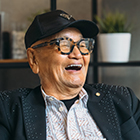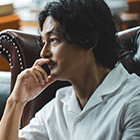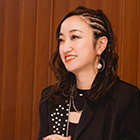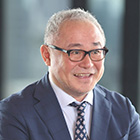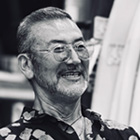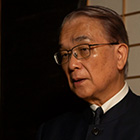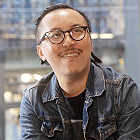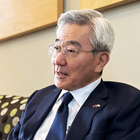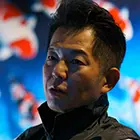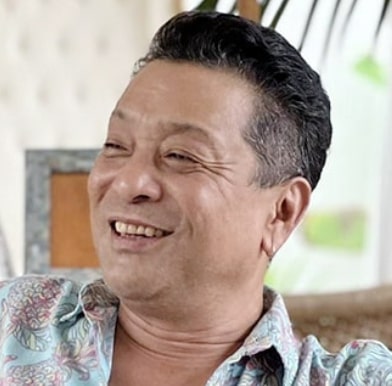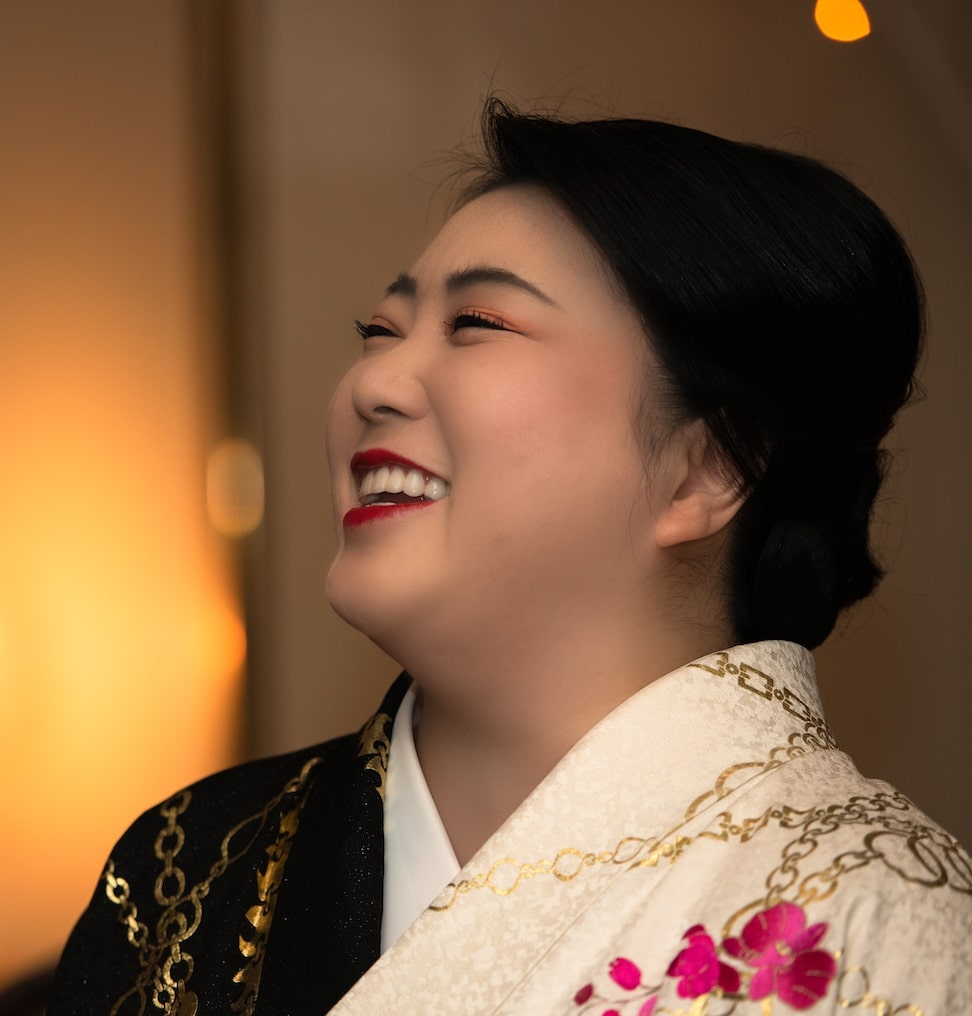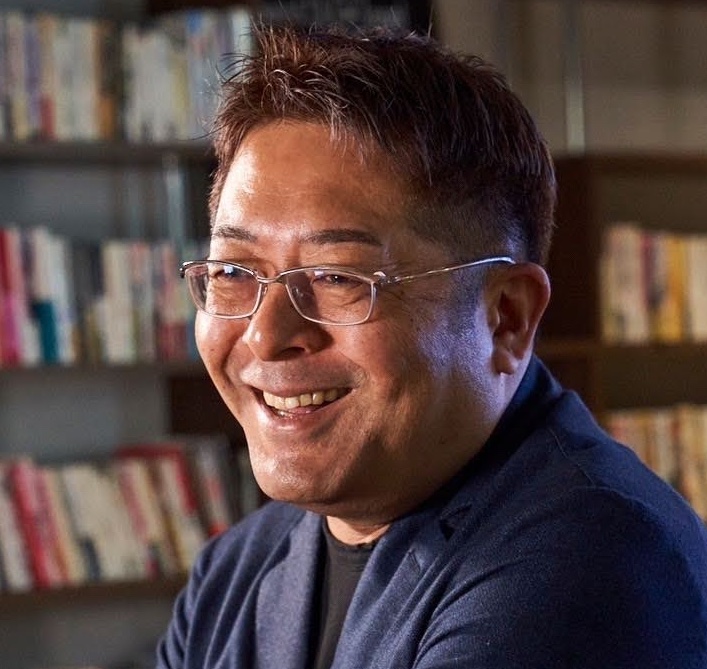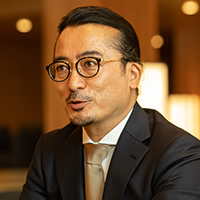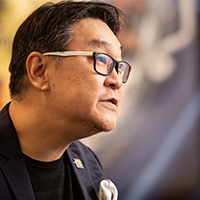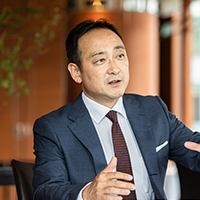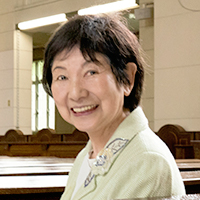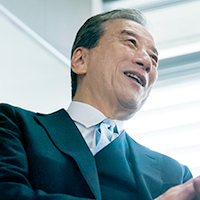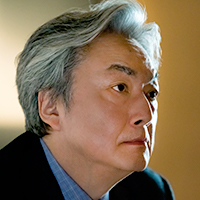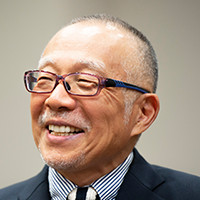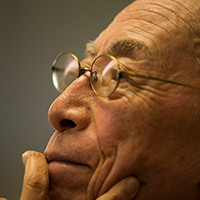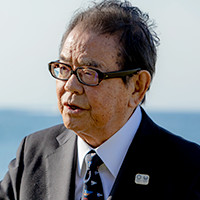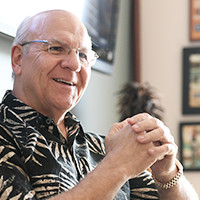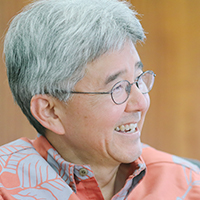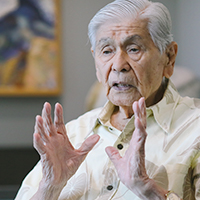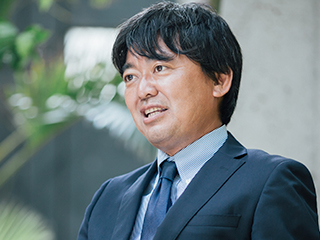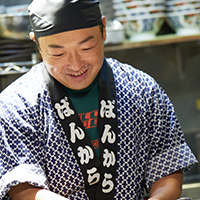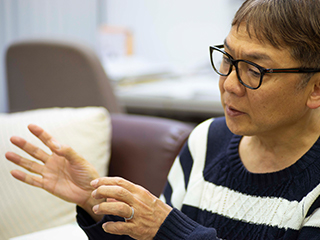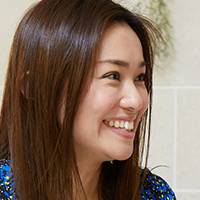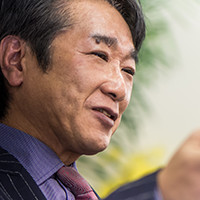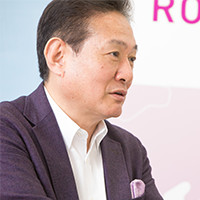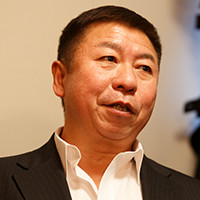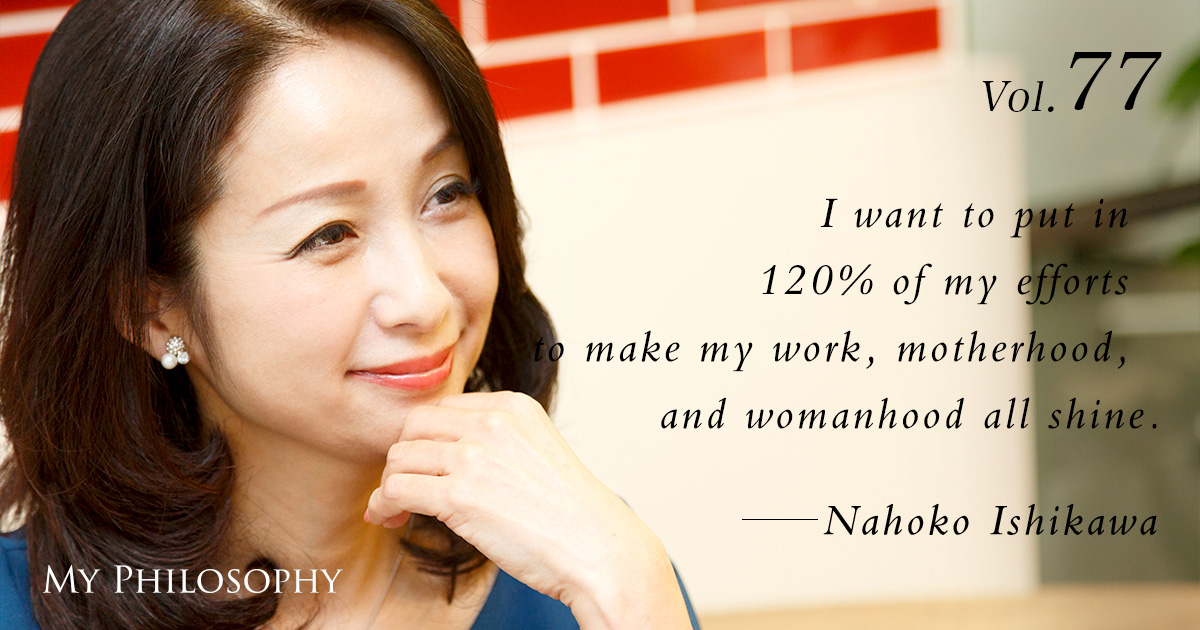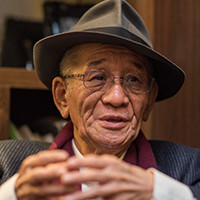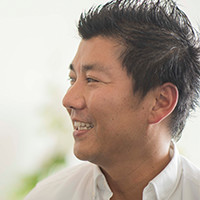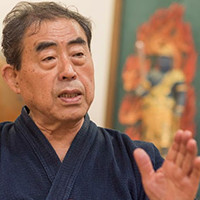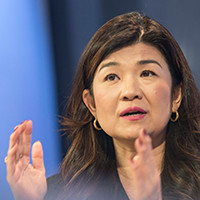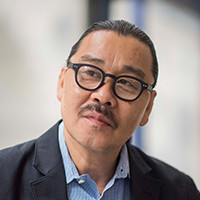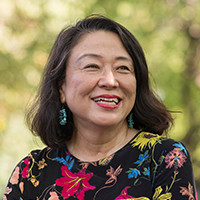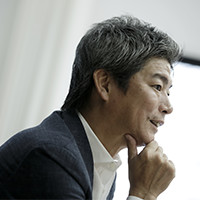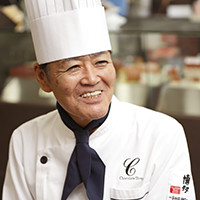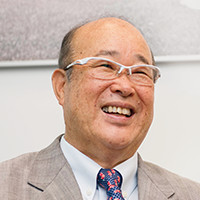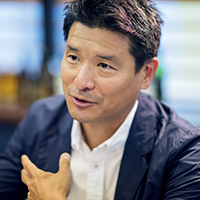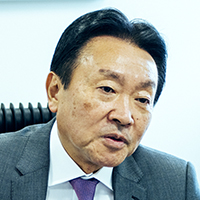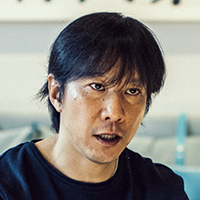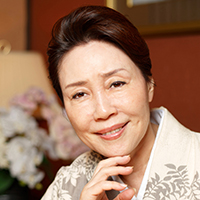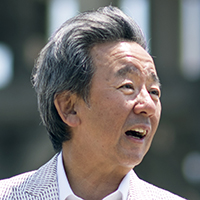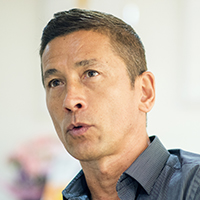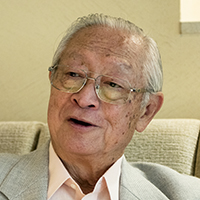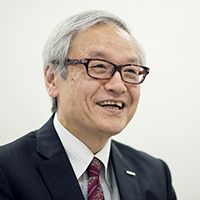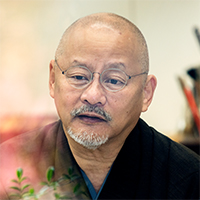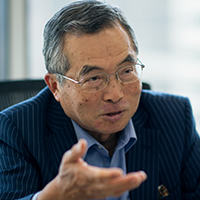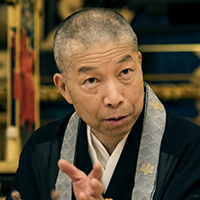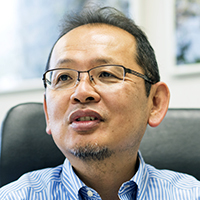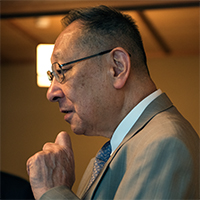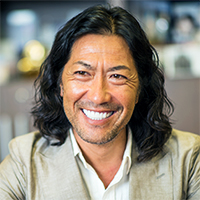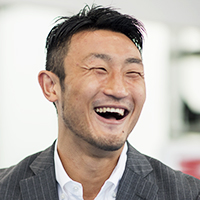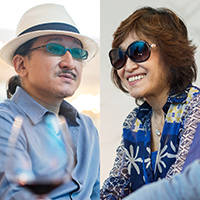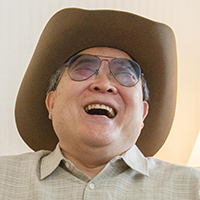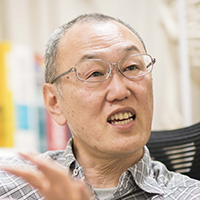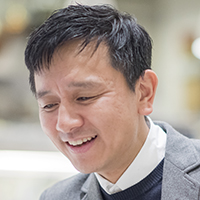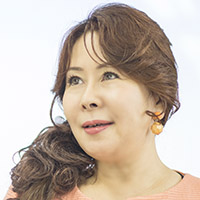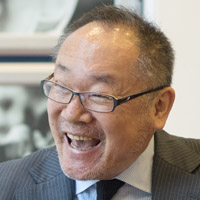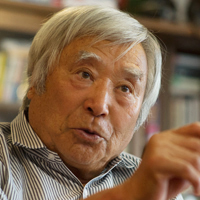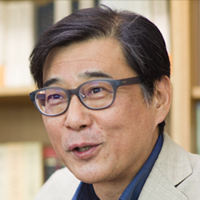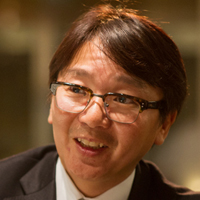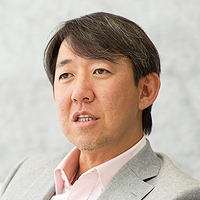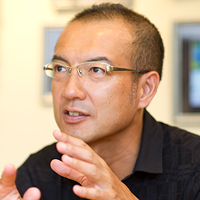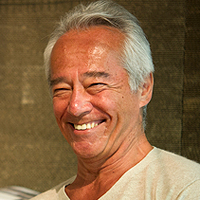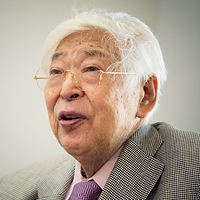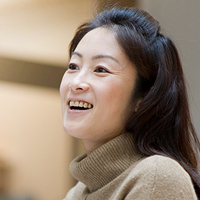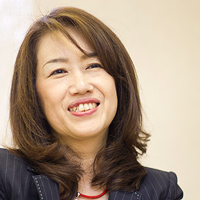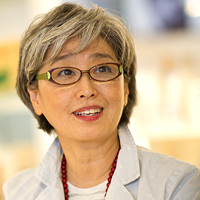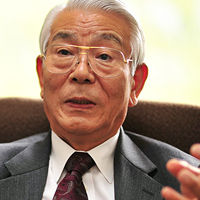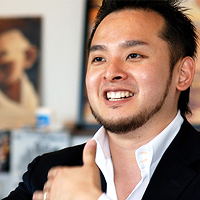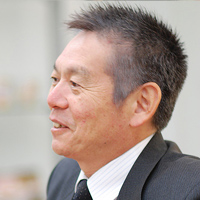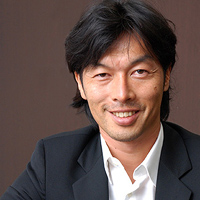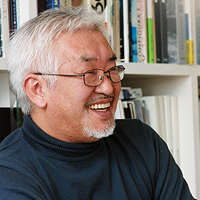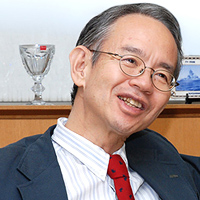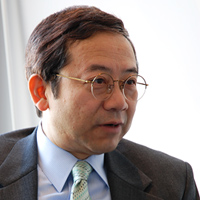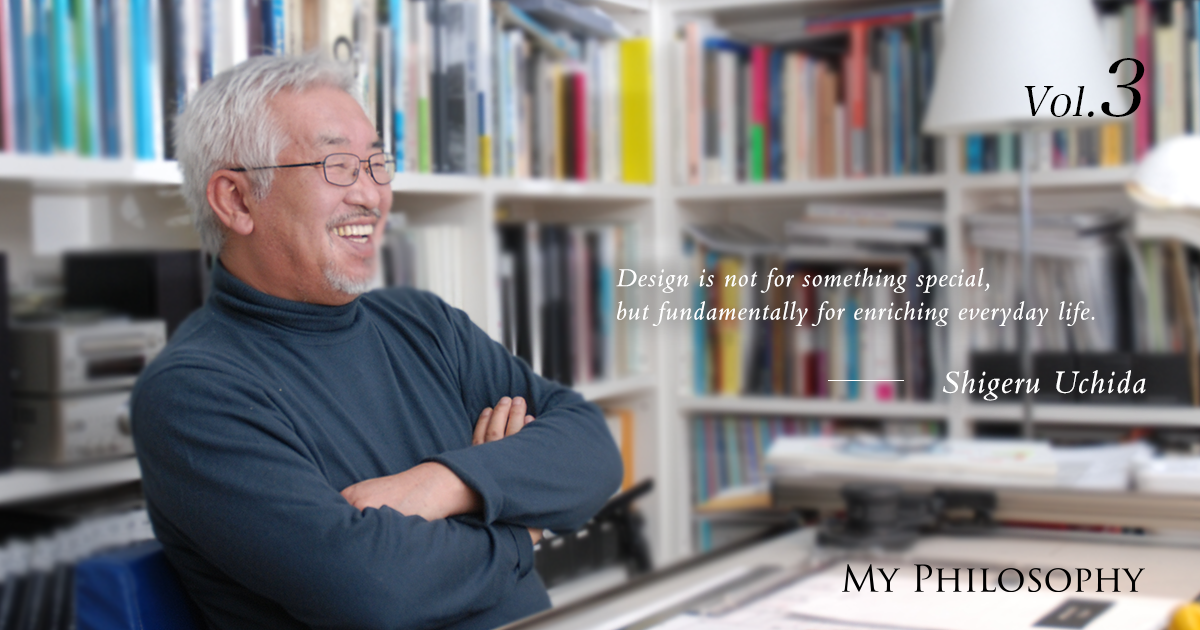
In July 2007, Professor Shigeru Uchida, who received the first Medal with Purple Ribbon as an interior designer, shared with us the concepts that have been important to him in his interior design activities.
Profile
Vol.3 Shigeru Uchida
Interior Designer
Graduated from Kuwasawa Design School. Guest Professor at Tokyo Zokei University and Kuwasawa Design School. Recipient of the Mainichi Design Prize, JCD International Design Award, the First Kuwasawa Design Award, Art Encouragement Prize of the Minister of Education, and the Medal with Purple Ribbon.
As a leading designer representing Japan, he has engaged in a wide range of activities both domestically and internationally, not limited to the design of commercial and residential spaces, but extending to furniture, industrial design, and regional development.
His major works include Roppongi WAVE, boutiques for Yohji Yamamoto, the Government Pavilion at the International Exhibition, Tsukuba Japan 1985, Hotel Il Palazzo, the Kobe Fashion Museum, the tea rooms “Ji-An, So-An, Gyo-An”, Mojiko Hotel, and the Oriental Hotel Hiroshima. His works are also part of the permanent collections of major institutions such as the Metropolitan Museum of Art, the San Francisco Museum of Modern Art, The Montreal Museum of Fine Arts, and the Denver Art Museum, among others.
※The titles and affiliations are as of the time of the interview (November 2007).
Mr. Shigeru Uchida passed away on November 21, 2016, at the age of 73.
He graced us with his presence during the third series of “My Philosophy” which began in 2007, where he shared various pieces of advice. The attitude of “observing things” that he advocated has been put into practice since that time. We sincerely pray for his soul to rest in peace. R.I.P.
Observing People
I believe that design is something that enriches human life. Enriching human life begins with observing humans. Observing everything in detail, including how people react with joy or displeasure, and what places make them happy, encompasses both people and nature. Design exists on top of this observation. A country without proper basic design is flawed. It’s not the presence of something special that indicates a country’s richness, but rather a country that makes everyday life clean, simple, peaceful, and efficient. It can be said that the quality of everyday cultural life creates a good country.
Human life consists of various times apart from daily life, including moments of relaxation slightly removed from the ordinary, or times of weddings and funerals. For these different times in human life—ordinary, extraordinary, and beyond ordinary—design exists correspondingly. When people hear the word ‘design,’ they expect it to be about something special, but design is not inherently for special occasions. Many designers misunderstand this, but in reality, the everyday is more important. Of course, when people want to step away from their daily lives, a different design becomes necessary, and that design is also important. I believe design is a profession that supports all aspects of the mind and body.”

Being Different
In Yokohama, where I was born and raised, a diverse population lives together, including Americans, Europeans, Chinese, Koreans, laborers, and office workers. Additionally, the town was a melting pot of various elements, with post-war democracy education set against the backdrop of Japanese culture. Living in such a town teaches you intuitively that ‘values are not singular.’ Each has its value, and all are true. Thus, it becomes natural to discern that there isn’t just one way things must be.
Knowing that values are not singular is the most important thing in designing. When you go abroad, you realize how different Japanese values can be from those of other countries. The difference in values is not about conflict but about which is more interesting. Feeling these differences can also be an opportunity for your heart to flutter. Many artists travel when they reach a deadlock because they aim to develop something new within themselves by adopting different values. There would be no point in going if everything was the same as in Japan. This is why many people travel.
Establishment of Uchida Design Inc.

After graduating from Kuwasawa Design School, I worked for a company introduced to me by the world-renowned designer Shiro Kuramata. About two years into my tenure, I considered becoming independent, but he advised against it, saying, “You’re not ready yet. You’re too impetuous, you need to calm down.” A year later, he unexpectedly called and suggested I start my own venture, so I took the leap and established my own business.
At that time, what had me so impassioned? As I wrote in “Japanese Design Philosophies – Time, Space, Memory, Nature”, there was a rapid shift in the societal paradigm, and I could see how the world was about to change. I felt an urgency to become independent and create something before it was too late. It was a time when society was structured around industry, and the relationship between “humans” and “society” was about to undergo a significant transformation. In a society built on scientific and industrial understanding, humans were fitted into its mechanism like machine parts, essentially becoming ‘humans for the sake of society.’
After 1968, as we entered the information age, my vision was not to create ‘individuals for the sake of society’ but rather ‘a society for the sake of individuals.’ Although I believe the situation has worsened today, at that time, I was constantly thinking about what the relationship between design and humans would be, as well as our relationship with nature.
My Philosophy

In a huge conference on education issues, I once discussed the concept of “Shu Ha Ri,” which posits that education involves “Shu” (protecting and mastering the fundamentals), “Ha” (breaking away and innovating based on those fundamentals), and “Ri” (transcending them).
The current education system lacks “Shu.” There’s a total absence of the attitude to observe, study, and learn from others. The term “breaking the mold” is common, but without having learned anything from others, one cannot depart from or break away from anything. In design, there are moments of departure from the everyday and transcendence, which against the backdrop of somewhat monotonous daily life, appear glamorous and inherently make the design more glamorous. Yet, these moments only make up about 20% of the total time of human life, and many designers prefer to focus only on designing for these non-daily occasions. They lean towards flashy designs because these are more likely to be featured in magazines and attract attention. However, without a solid foundation in everyday design, it’s impossible to create good glamorous design.
The most challenging task is designing for the everyday. It’s easy to spot a careless design. “Beauty” resides within the everyday. Even though special moments can be dazzling, they often become tiresome. The beauty of the everyday must always be effortless, as design is directed towards the human heart. This means that the point is not to stick with “Shu,” or the basics, for life but to eventually break away and transcend them. It is here that true creativity emerges. The brilliance of “Shu Ha Ri” lies in this transition. The foundations of various cultures are all encapsulated in this concept.
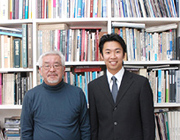
The importance of “observing” things and the understanding that “values” are diverse are indeed crucial points that should be cherished in the future provision of our services. It was conveyed how Professor Shigeru Uchida, in his twenties, pondered various things and expressed them through his works. Moreover, I was reminded anew of the importance of “Shu” in “Shu Ha Ri,” which is vital in any job.
November 2007 at Uchida Design Inc. Edited by Naomi Kusuda. Photographed by Daiki Ayuzawa.





